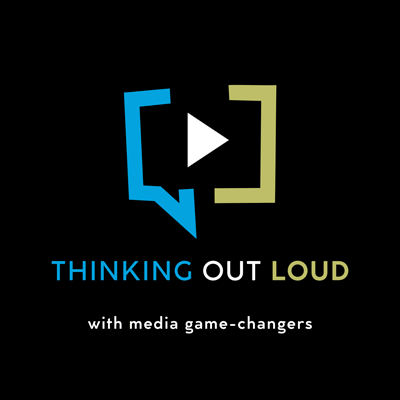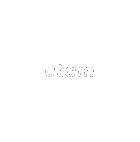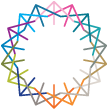
Read snippets of their conversation in the Q&A below, which delve into the nuances of choice curation and revolutionary tools, including the Think Bigger framework and Choice Map, and how businesses can simplify and enrich the consumer experience by offering well-organized, manageable options.
Vicki: We’ve been talking about peak TV for over a decade, and streaming has created a new distribution channel for all this content, overwhelming consumers. They’re paralyzed by choice. What do you do when you realize you’ve offered too much?
Sheena: The key is choice curation. One tool is categorization, but as the number of options has proliferated, even categories have become overwhelming.
I teach people a method called Think Bigger and the use of a Choice Map. A Choice Map helps organize a whole bunch of options in a structured way, boiling it down to the most relevant five to 25 options based on goals and preferences.
Vicki: The Think Bigger framework and Choice Map—do they walk customers through a choice process or help inform a choice menu to make the process more comfortable?
Sheena: Both. The Choice Mapper asks what you’re ideally looking for, such as a family-friendly movie. It presents five criteria to pay attention to cognitive load. You indicate the experience you want, whether that is tearjerker or a comedy. It then presents a five-by-five grid of movies: five safe picks with ratings, and beyond that, off-the-beaten-path options that still fit your requirements. It curates options based on your upfront requirements, and structures the data on the backend to present a manageable set of choices on the front end.
Vicki: And this is actually more than just a recommendation engine.
Sheena: Exactly. Traditional recommendation systems, even with AI, just look at what you’ve done in the past and recommend similar choices. They assume you always want the same type of content and don’t allow much deviation. The choice mapper, however, lets you specify new needs and goals each time, offering more flexibility in your choices.
Vicki: It’s really about creating a better choosing experience for our customers.
Sheena: Yes, especially because movie watching is meant to be a variety-seeking experience. Unlike other areas where consistency is desired, like your favorite lunch sandwich or how your desk is organized, entertainment should offer variety.
Vicki: Let’s discuss another part of the media entertainment technology business, such as choosing between product A or product B from the same companies or between competitive companies. Often, we think price, customer service, or more choices are the key drivers. What has your research shown about what really influences consumer decisions between competitive products and companies?
Sheena: When it comes to fun activities like watching movies, price isn’t the most important factor. What matters is whether the experience was seamless, easy, and enjoyable. You shouldn’t feel cheated or think you would’ve been better off choosing something else. Those are the key criteria to consider.
Vicki: Consumers need to feel confident and good about their choices. What can we do to help validate their decisions?
Sheena: The choice mapper, for example, can help by offering sets of five options based on your criteria. Studies show that people manage choices better when they’re organized and rated. For instance, a restaurant study found that customers preferred beer menus with six options or a larger menu with ratings over a large, unorganized menu. It’s about presenting choices in a way that feels comprehensive yet manageable.
Over-categorization can lead to information overload. It’s important to balance providing variety with making the choice process simple and meaningful.
Vicki: Let’s talk about bundling. Streaming services are partnering to create bundles. Are we simplifying things for customers or creating more confusion?
Sheena: Bundling can add real value if it simplifies the process. Imagine opening a service that consolidates your subscriptions and helps you find content across all of them seamlessly. For instance, if you want a specific movie, it should search all your platforms and take you directly to it. It should also prompt you for preferences and show you new releases with ratings.
The key is making it easy, transparent, and enjoyable.
Vicki: We need to balance asking people what they want with suggesting options and helping them discover what they want. Is that the sweet spot of choice?
Sheena: Yes, because often people don’t know what they want. Helping them discover and feel confident in their choices is crucial. There are different types of customers, from those who know exactly what they want to those seeking recommendations for a group with varied tastes.
Tools like the choice mapper can cater to these different needs by offering curated options based on specified criteria.
Vicki: Expanding beyond entertainment content, let’s talk about subscription models and bundles. Customers pay for internet, mobile service, video content, etc. Does the same choice framework apply, or is a different model needed?
Sheena: The same principles apply. Whether it’s connectivity and content packages or individual subscriptions, the goal is to simplify the decision-making process, offer transparency, and enhance the overall experience by making it easy for customers to find and enjoy what they need.
Vicki: I think it’s really important for us to understand that by layering in the concept of choice–the Think Bigger framework and the Choice Map that you’ve developed into our business structure and strategy–, we will ultimately lead consumers to be more satisfied with the choices they’re making, and therefore happier with each of our companies. This whole paradox of choice is a path to business success for us.
Sheena: Absolutely. And just to clarify, I’m not saying reduce choice. I’m saying reduce the burden of choosing.
Vicki: I love that. It’s not always that less is more. Sometimes more is okay as long as it’s not overly cumbersome or overwhelming to the consumer.
Listen to the entire interview with Sheena Iyengar on CTAM’s Thinking Out Loud Podcast episode #52.



